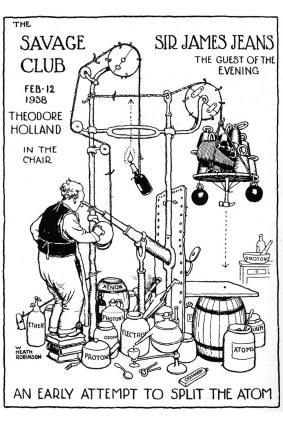Who Invented The Rube Goldberg Invention?
The Rube Goldberg invention is a complex device that achieves a simple objective. Entering the American lexicon in 1931, it defines the adjective “Rube Goldberg,” a staple of most American English dictionaries. “Rube Goldberg,” of course, is only the adjective, but it is followed by “invention,” “contraption,” “device,” or a plethora of other synonyms of those words that “Rube Goldberg” modifies. But who is Rube Goldberg and where does the convention of the Rube Goldberg invention come from?
Ruben Lucius Goldberg was born in San Francisco, California on July 4, 1883. He received a degree in engineering from UC Berkeley in 1904, but in 1907 he moved to New York City and became a cartoonist for the New York Evening Mail. He was very popular, and by the time America entered World War I, Goldberg was nationally syndicated and, true to the journalistic standards of the time, William Randolph Hearst had already begun a bidding war to lure Goldberg from the Evening Mail to the New York Journal. The Evening Mail was able to keep Goldberg until 1934, at which time he continued syndicating cartoons until his death in 1970.
According to Charles Keller in his book, The Best of Rube Goldberg, Goldberg began drawing the iconic inventions in 1915 and they became a weekly institution in American journalism. In fact, there are innumerable imitations of the motif in various aspects of popular culture including television (especially animated features), movies, and games. His name is also given to the cartoonist of the year award (Ruben Award), by the National Cartoonists Society. There are even Rube Goldberg Machine Contests for high school and college students around the United States. The idea of creating fanciful machines to complete simple tasks taps into human imagination and foolish inefficiency at the same time.

Above: Rube Goldberg improves the game of golf.
William Heath Robinson (1872-1944) also drew complex machines that completed tasks in Britain at about the same time as Goldberg. Robinson began his art career by illustrating books. He did several of them from 1897 to 1916. In the 19-teens, Robinson began drawing cartoons satirizing World War I for British media specializing in drawing impossible secret weapons that the enemy might use. This morphed into drawing the complex machines, and by 1917, the Oxford English Dictionary listed “Heath Robinson contraption” as a noun.
Robinson began drawing the absurd devices in children’s book illustrations and continued in several media until he died in 1944. During his lifetime he, as did Goldberg, published several books of cartoons including the machines. Both of their legacies have continued. For Robinson, it is an improvised device that was engineered by the British Air Force for its chaff dispensing mechanism called a Heath Robinson Chaff Modification.
So, who invented the Rube Goldberg Invention? As Robinson, being 11 years older than Goldberg got started drawing his machines first, there is a good chance that he was the first of the two to do it, but because those contraptions got their start in children’s books, it is unlikely that Goldberg saw them and was inspired. Goldberg’s methodology for drawing his inventions includes a step-by-step instruction of how the thing works. Those steps often utilize an item in the news at the time, a difference between him and Robinson.
Eventually, of course, both cartoonists became aware of the other’s work, but there was a big world full of many new products that were ripe for satire during the industrial age. Between the two of them they had enough material to keep themselves and scores of other cartoonists busy on a daily basis. Not only that, there was a big ocean between them, and American media did not print the Robinson cartoons any more than the British media ran the Goldberg variations on the Robinson theme.

Above: Heath Robinson simplifies atomic fission.
